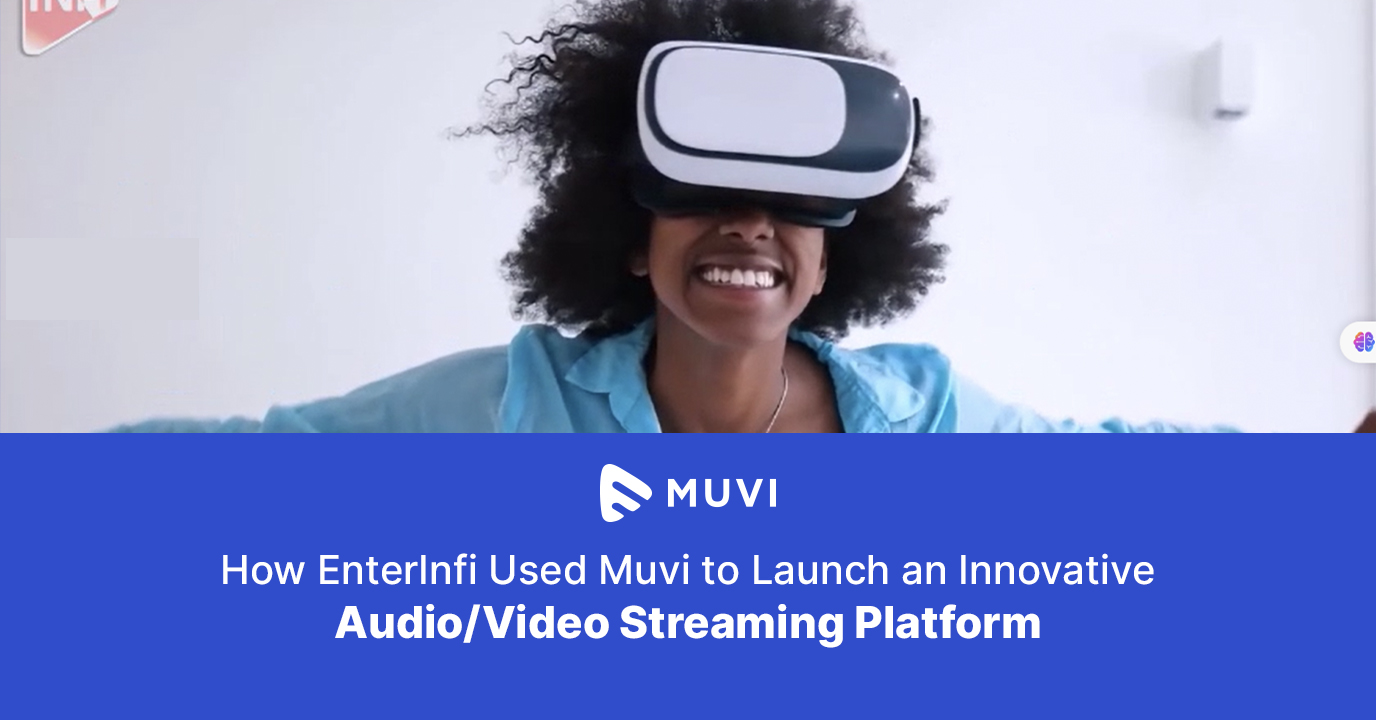Live streaming technology has indeed changed the streaming world, and there is no denying to that. But how did we even get to this point? What is the main driving force behind streaming and video technology? It is a bit challenging to answer everything in one go . However, video streaming protocols are the partial foundations of all video broadcasting, but they are among the main pillars in video streaming.
The selection of streaming technology adds different considerations that include understanding the advantages and disadvantages of the streaming protocols used by the technology. In this blog, we are going to dwell on the concept of protocols and the variants.
What is a protocol?
A protocol is a set of rules on how data is transferred from one communication system to another. These are generally layered on one another to form a protocol stack. Each layer of the protocol has a specific function and supports each other. The lower layer is the foundation, and each layer adds more strength to the below layer.
For instance, we all may know about the IP address, which is known as Internet Protocol. This protocol structures the devices using the internet. The IP sits at the network layer and is overlaid by Transmission Control Protocol (TCP) at the transport layer and the Hypertext Transfer Protocol (HTTP) at the application layer.
Seven layers are defined by the International Organization for Standardization (ISO) that includes Physical, Datalink, Transport, Network, Session, Presentation, and Application.
What is a streaming protocol?
The streaming protocol is the standard method of delivering multimedia over the internet. A video streaming protocol generally sends the chunks of content from one device to another and reassembles this data into playable content on the other end. The output device and the viewer have to support the protocol to get the content delivered.
TCP Vs. UDP
The transport layer is the one that needs great attention as it is responsible for the content transfer from source to the end platform. There are two ways to transmit the content. One is the Transmission Control Protocol (TCP), and the other is User Datagram Protocol (UDP). The difference between these two is that TCP communicates with the devices to establish a connection to transfer the data. At the same time, the UDP isn’t involved in this step.
UDP transmits small information bits faster than TCP. However, it is expensive compared with TCP. Due to the lack of multiple connectors and confirmation steps between the devices, data cannot be transmitted correctly. As a result, there may be some minor issues that relate to the overall quality.
A Quick Overview of Common Protocols Used for Streaming
Legacy streaming protocols
Traditional streaming protocols like RTSP and RTMP support low-latency streaming but are not natively supported with devices and browsers. These work best for streaming to a small audience from a dedicated server.
RTSP/RTP – Real-Time Streaming Protocol/ RTP (Real-Time Transport Protocol)
RTSP/RTP was generally interchanged with each other. RTSP is a presentation layer protocol that allows the end users to command the media servers via play and pause capabilities and the RTP is a transport protocol used in the transporting of data. Most iOS and Android devices were not compatible with the players and were rarely used for playback.
Advantages
Low latency protocol of less than 2 seconds
Best choice for surveillance systems
Disadvantages
Dependent on other protocols
Limited native browser support
Poor device compatibility
Adaptive HTTP – based streaming protocols
RTMP – Real-Time Messaging Protocol
RTMP was created by Macromedia and later owned by Adobe. It is a universal protocol designed for live streaming and on-demand video content using the Adobe Flash applications. The protocol transports the audio and video data via a dedicated streaming server and Adobe flash player. The adaptive bitrate streaming and open standards have edged RTMP. Later Adobe announced the demise of Flash, which officially ended in 2020.
Advantages
Low-latency protocol with less than 5 seconds
Zero buffering
Best video protocol for stream ingestion
Disadvantages
Lack of quality user experience
Not scalable
Became obsolete due to the demise of Flash
HTTP-based Adaptive protocols
The streams deployed over the HTTP are not technically streams; they are considered progressive downloads that are sent through the regular web servers. By using adaptive bitrate streaming, these protocols deliver the best video quality and viewer experience.
Apple HLS (HTTP Live Streaming)
This protocol supports the adaptive bitrate streaming, and is the leading player in viewer experience. It delivers via HLS and content via playback on most devices that reach a vast audience. It supports limited iOS devices, but native support has been added to a wide range of platforms. All Google Chrome browsers, Android, Microsoft, and Linux can utilize it to deliver the stream using the HLS.
Advantages
Widely used video streaming protocol
The adaptive protocol that provides the rich user experience
Supports high-quality video content
Disadvantages
High latency during the live streaming
Low-Latency HLS
The latest technology offers backward compatibility to existing clients and promises the delivery of sub-three second streams globally. The successful deployments of low-latency HLS need integration from vendors across the video delivery ecosystem.
Advantages
Very low latency
Scalable
High quality
Disadvantages
Lack of vendor support in implementation
Microsoft Smooth Streaming
MSS is Microsoft’s adaptive bitrate video streaming protocol designed with additional security features to protect the content against piracy. The protocol has good support for PlayReady DRM. The protocol isn’t that competing with the HTTP-based formats and is not used commonly.
Advantages
Adaptive Bitrate Streaming
DRM protection against piracy
Disadvantages
Need specific Microsoft developer plugin to deploy
Limited to Microsoft systems and its products
Not a good choice for live streaming
MPEG–DASH ( Moving Picture Expert Group Dynamic Adaptive Streaming Over HTTP)
Dynamic Adaptive Streaming over HTTP (DASH) is an industry-standard alternative to the HLS. Using the DASH has an open-source option because Apple tends to prioritize the proprietary software and supported DASH. It is an alternative to HLS and an optimal choice for broadcasters today.
Advantages
Open-source
Code agnostic
Optimized user experience
Adaptive bitrate streaming
Disadvantages
Lack of device compatibility
Did not support iOS devices
Low latency protocol up to 30 seconds
Novel technologies
New technologies like WebRTC and SRT promise a remarkable transformation in the streaming landscape. It is similar to low latency HLS, which are designed based on the latency in mind.
WebRTC (Web Real-Time Communications)
WebRTC is probably the most reliable technology that delivers voice and video streaming to and from any major browser. The framework is mainly designed for chat-based applications.
Advantages
Super-fast in delivering streams – sub-500 milliseconds
Depends on the browser
Disadvantages
Designed for video conferencing
Not scalable
SRT (Secure Reliable Transport)
It is an alternative protocol for proprietor transport technologies. It helps in delivering reliable streams without any base on network quality. It competes with the RTMP and RTSP as a first-mile solution. From recovering lost packets to preserving the timing behavior, SRT was designed to solve video contribution and distribution challenges across the web.
Advantages
High quality
Low-latency video over suboptimal networks
Disadvantages
Not widely supported for video playback
In this article, we all understood about the basic functionality of popular streaming protocols. Every protocol comes with its own advantages and disadvantages. The choice of protocol depends on what your end goal is and what are the devices that you are targeting. Some factors like Latency, Scalability, Quality, Usage, Playback support, Codec requirements plays a role too.
We believe HLS to be an excellent choice for most use-cases. Along with RTMP, HLS is our default protocol for Muvi. By using the HLS protocol on our platform, users can be rest assured that their content reaches their audience in the highest of quality without any latency in the stream. Take advantage of our 14-day free trial to test out our streaming capabilities for yourself. To sign up, log on to www.muvi.com today!















Add your comment